Auction time again, and it’s the turn of Onslows, whose next sale is exactly a week today.
Much of which, however, is not aimed at those, like me, of a later twentieth century persuasion. As you may have noticed, there is an anniversary on, and so the vast majority of the sale is made up of World War One recruiting posters and ephemera. It is a comprehensive haul.
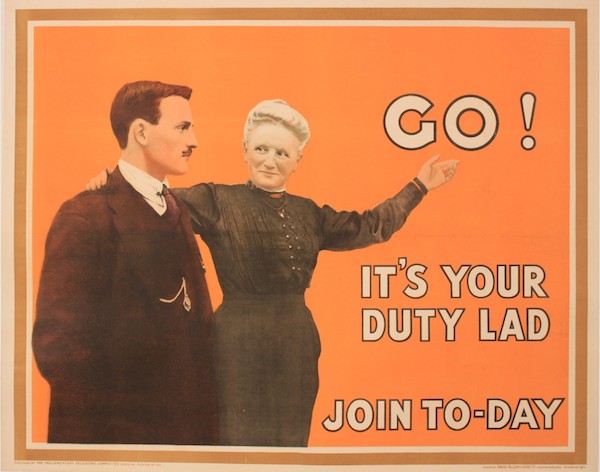
Anonymous, 1915, est. £300-500
At some future point I may end up with opinions about World War One recruiting posters – I have even bought a book about them, which is unfortunately dense and not that interesting – but even so, that moment hasn’t quite arrived.
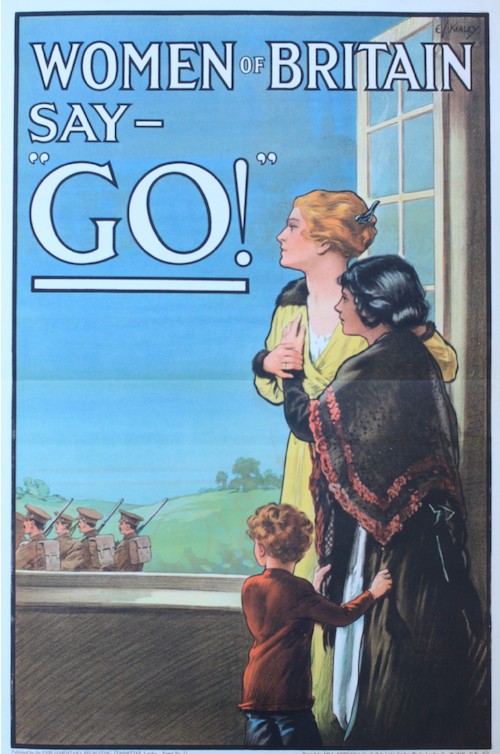
E J Kealey, 1915, est £500-600
Although I have chosen both of these posters (out of over three hundred WW1 lots on offer) to demonstrate one point, which is that this conflict – unlike the Second World War – was very much the concern of men only. Women could persuade, they could watch and weep, but they were observers, not participants. (This did shift a little bit later on in the conflict, but not much). All of which must have made the next war, only just over twenty years later, a startling contrast. Not only was it the case that every single member of the population was mobilised for the war effort, but women were in uniforms, posted abroad, even conscripted. The changes in women’s status would probably seem insignificant to us today, but then the shifts must have felt huge.
I suppose I also have to mention this.
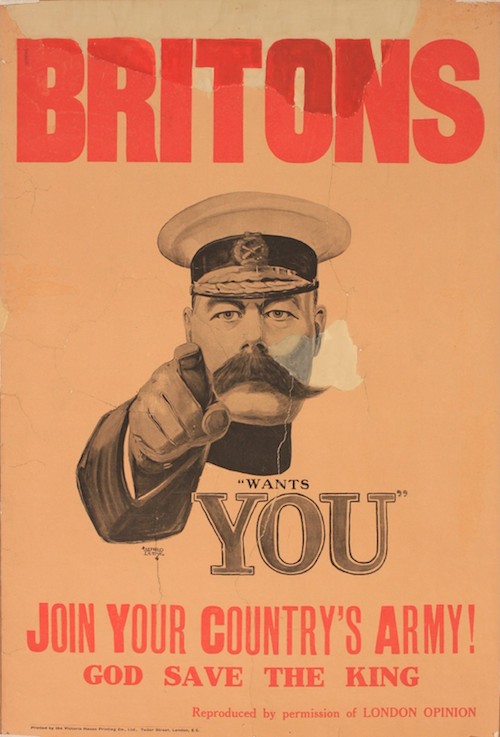
Alfred Leete, 1914, est. £10,000-15,000
That’s not only on account of the estimate, either. Despite the fact that this is perhaps one of the best-known posters in British history, whole swathes of the internet are devoted to debating whether or not it actually ever was a poster. There is even a book which sets out to prove that it never existed as a poster, really and – if I have read it right – it’s all the fault of the Imperial War Museum that we think it did.
Onslows have come down quite firmly on the side of it being a poster.
This rare and iconic poster is one of only four known to exist, there are examples in the Imperial War Museum, State Library of Victoria Melbourne and the Robert Opie Collection. Last year it was wrongly reported in the press that the poster’s existence was a urban myth and was never used as a recruiting poster this was not the case. Proof of the poster being displayed publicly in 1914 has now come to light in two photographs, one showing the poster on a hoarding with other’s published by the Parliamentary Recruiting poster at Liverpool Station 15.12.1914 and the other posted on pillars of Chester’s Town Hall. It would be reasonable to say that the rarity of this poster could be put down to the numbers printed being far less than the Parliamentary Recruiting Committee issued posters of which there was a surplus available for sale after the war. The poster for sale is pure ephemera as it would appear to have been torn down from display either in disgust or as a future collectors item.
But then they would say that, wouldn’t they, what with having a poster to sell. The truth is, I suspect, somewhere in the middle (isn’t it always). The image started as a magazine cover, but somehow or other there were a few posters knocking around. However what did happen – and for me this is the really interesting bit – the image was so powerful that, despite the limited numbers, it became the single image that people remembered when they thought about recruiting posters after the way. There are a lot of reasons for this, number one being that the walls in 1914 and 1915 were saturated with other images of Lord Kitchener, and also, as the book suggests, the Imperial War Museum got a copy and exhibited heavily just after the war. So lesson number one is that memories can be influenced after the event and cannot always be relied upon.
But what’s even more fascinating for me is the way that posters generate their own mythology, and quite often we believe things about them that simply aren’t true. The unravelling of the Kitchener story has a parallel in the story of Keep Calm and Carry On, where, in the same way, the story that everyone believed about the poster representing a classic British stiff upper lip in the face of invasion turned out to be utter confected cobblers. In fact, the poster arose from the fear that the entire population of Britain was going to have a nervous collapse in the face of any enemy bombing. It’s just hindsight that gave us another story, just as in the case of Kitchener.
But I digress. Mind you, it doesn’t matter too much if I do, as even the rest of the sale doesn’t contain much that I can get excited about. There are lots of World War Two posters as well, and mostly of the variety that involve pictures of guns and tanks, so we will need to look elsewhere for our fun.
I do like all of these Central Office of Information posters very much though, so much so that we already have the middle one hanging on the wall.
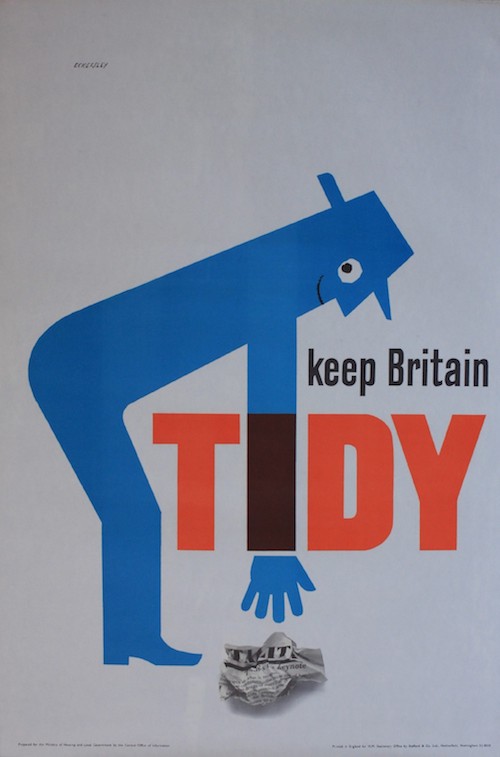
Tom Eckersley, 1955, est. £100-150
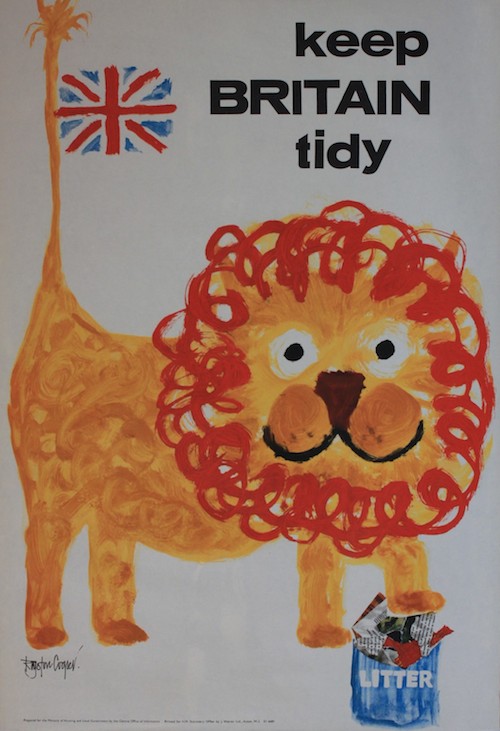
Royston Cooper, 1955, est. £70-100
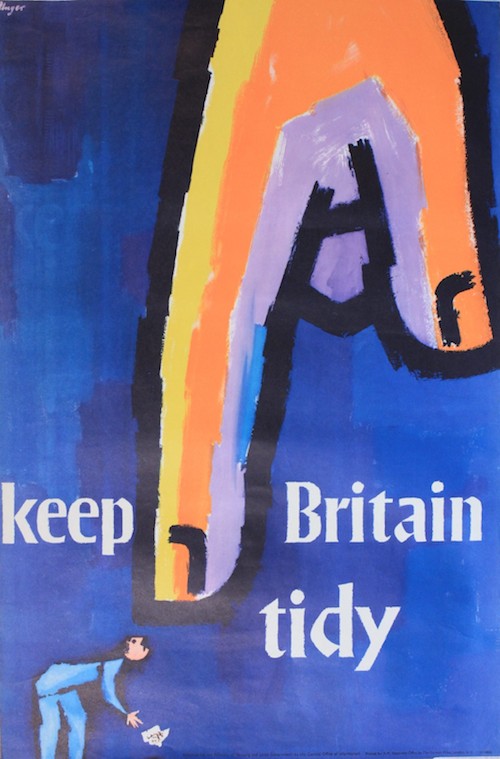
Hans Unger, 1955, est. £80-120
The dating is from the catalogue, and I’m not entirely sure I agree with it, but don’t have any proof one way or the other. Anyone else got any thoughts?
I quite like this Frank Newbould, although mostly because I am becoming interested in the Empire Exhibition.
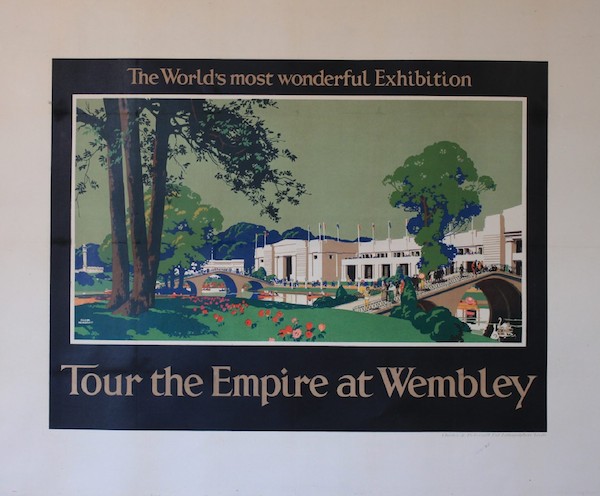
Frank Newbould, 1925, est. £400-500
While I like this one for no good reason at all, except that it’s jolly.
Elsewhere, there is the usual fare of travel, railway and Shell school posters.
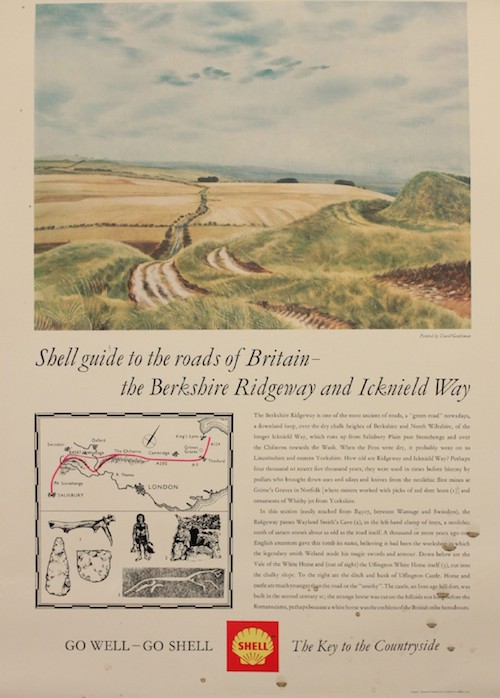
David Gentleman, est £40-60 (three posters)
And, this month, precisely two London Transport posters, both by F Gregory Brown.
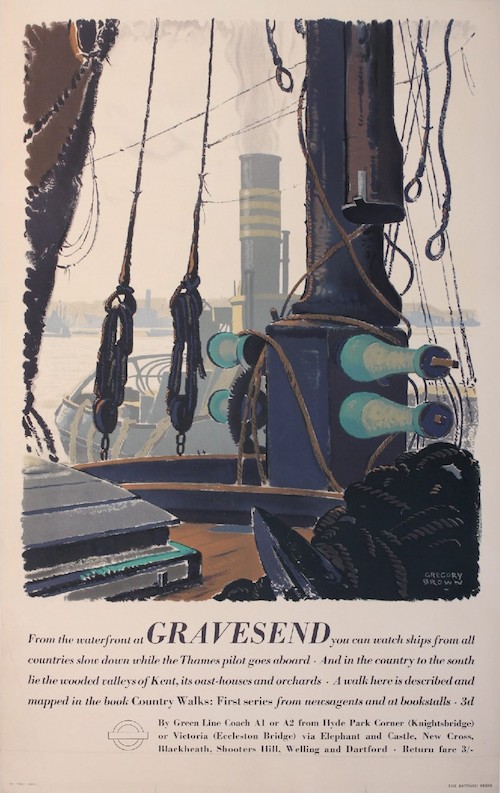
F Gregory Brown, 1937, est. £300-350
That’s rather good, though, isn’t it?
And finally, there are also cruise posters, where this bit of Orient Line modernism stands out from the rather more traditional crowd.
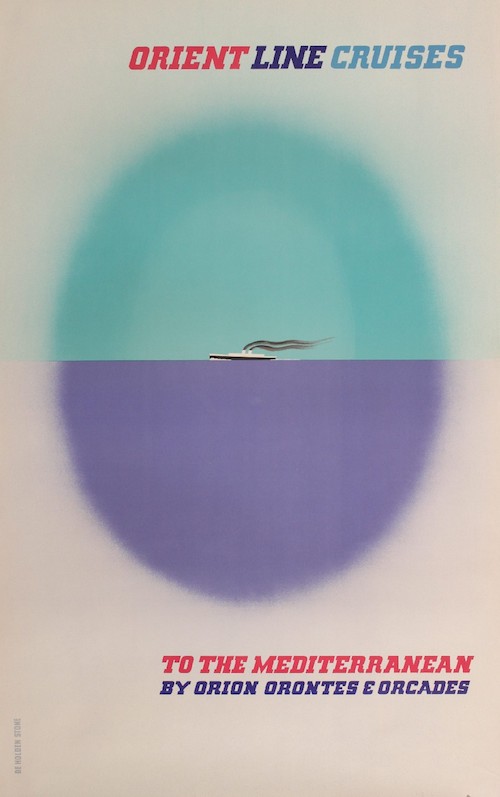
James de Holden Stone, est. £250-350
I can’t tell you much about James de Holden Stone, except that he was art director for Vogue in 1945 and taught at the Royal College of Art. As ever, if anyone can add to that, please do. Not least because I’ve found one thing which means that we’ll be coming back to him quite soon.
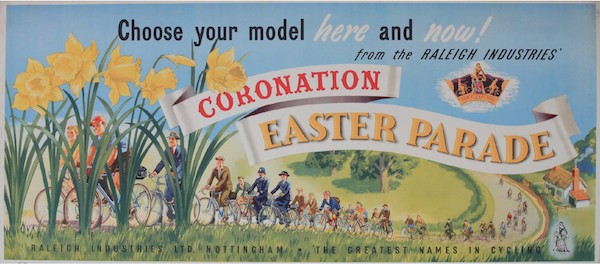
So glad to have my taste validated by someone of such high esteem as crownfolio! I successfully bid for the Gravesend poster at Onslows on Wednesday and delighted to get it for £100 less than lower estimate. However, like so many others, I am running out of wall space and will need a major rehang to accommodate this. Posters are my first and main passion but I find myself increasingly attracted to printed ephemera for reasons of space – some labels are particularly attractive and may well be reduced versions of full-size posters.
Thank you for such an informative blog, am constantly learning. A shame your tastes – 1950s/60s – don’t coincide more with mine – interwar, partly because I loathe 4-colour process.
Well done – that’s a good poster at an excellent price. Thank you for the kind words about the blog too, but perhaps it’s a good thing that our tastes don’t entirely coincide as otherwise we’d be scrapping over posters.
Let me know when you sort the wall space problem. We moved house and knocked down lots of walls. With hindsight, I have no idea what we were thinking of…